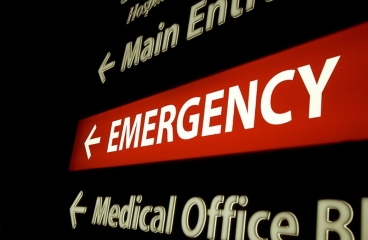Your Child's Health: Using the Emergency Room Wisely
Overview

What is the emergency department (ED)?
An emergency department (ED) is a place where you go for a medical emergency. It's not for routine health care. An ED is often open 24 hours a day. You don't need an appointment.
When should you use the ED versus urgent care?
It may not be clear when your child needs to go to the ED. It can help to think about how bad the injury or symptom is. Often the more symptoms your child has, the more serious the problem is. When you aren’t sure if the ED is the best place for your child to get care, you can call Health Link at 811 for advice.
If your child is younger than 3 months old and has injuries or symptoms you're concerned about, take them to the ED right away.
When to use the ED
Severe or life-threatening injuries or symptoms need care right away. The problem may be severe or life-threatening if your child:
- Passes out (loses consciousness).
- Has moderate to severe trouble breathing.
- Has a head injury, such as from a fall or a car crash.
- Has a very bad cut or wound.
- Has a moderate or severe burn or burns on many areas of the body.
- Has seizures.
- Self-harms or talks about suicide.
- Was poisoned or has swallowed an object, such as a battery.
- Acts different. Maybe they're less responsive or alert than usual.
When to use urgent care
Mild-to-moderate injuries or symptoms need care soon. The problem may be mild or moderate if your child:
- Has a sprain.
- Has a mild burn.
- Has a broken bone.
- Gets a wound that may need stitches.
- Is crying more than usual or is crying with a different type of cry than you're used to.
- Is nauseated or vomits and can't drink fluids, so they urinate less.
- Has mild trouble breathing.
- Has mild belly pain.
- Is coughing up a lot of mucus, or their cough is getting worse.
- Has signs of a skin infection.
- Has a sore throat or an earache.
What might you think about before taking your child to the ED?
Most health problems aren't emergencies. But sometimes the ED may be the quickest way to get the care your child needs.
If you're not sure about how serious your child's symptoms are or where to take them for care, call your nurse advice line (811 in most provinces and territories). If you are still not sure, it's okay to take them to the ED.
Before you go to the ED, you might ask yourself:
- Is the ED convenient or necessary?
- Is there another option (such as an urgent care clinic or a walk-in clinic) that I can get to?
- How serious are my child's symptoms?
Know that if you go to the ED for a problem that's not an emergency:
- It may take a long time to see a doctor.
- Your child will be seen by a doctor who doesn't know their past health.
How can you prepare for your child's ED visit?
Try to stay calm. This can help your child be calm too. Here are some ways you can help yourself and your child.
- Take some deep breaths.
- Tell your child what to expect.
Let them know that they'll wait awhile at the ED. They'll see a different doctor than they usually do. Talk with them in a way that suits their age and the situation you're both in.
- Bring a comfort item.
Maybe that's a stuffed animal, a book, or a blanket. If you can, bring a new toy. It can be a welcome distraction.
- Leave siblings at home, if you can.
This can help you focus on the child who needs care.
- Plan ahead for emergencies.
Here are some ideas:
Adaptation Date: 06/14/2024
Adapted By: Alberta Health Services
Adaptation Reviewed By: Alberta Health Services
Adaptation Date: 06/14/2024
Adapted By: Alberta Health Services
Adaptation Reviewed By: Alberta Health Services
